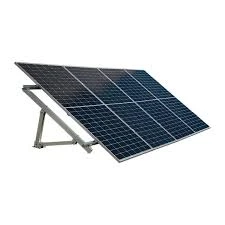bifacial dual glass
The Rise of Bifacial Dual Glass Technology in Solar Energy Solutions
In recent years, the solar energy industry has witnessed significant advancements in technology aimed at increasing the efficiency and reliability of photovoltaic systems. One of the innovations gaining momentum is the bifacial dual glass solar panel solution. This technology offers a unique approach to harnessing solar energy, and it promises to revolutionize the way we think about solar power generation.
Understanding Bifacial Dual Glass Technology
Bifacial solar panels are designed to capture sunlight from both sides, which distinguishes them from traditional monofacial panels that only harvest energy from one side. The dual glass configuration enhances the durability and efficiency of these panels. In a bifacial dual glass setup, both the front and back surfaces of the panel are made of glass, which not only protects the solar cells but also allows for better light transmission.
The concept behind bifacial panels is relatively simple they can absorb reflected sunlight from the ground, especially when installed over reflective surfaces like snow, sand, or water. This capability significantly boosts energy yield, as the additional power generated from the rear side can enhance overall performance by 10% to 25%, depending on the installation environment.
Advantages of Bifacial Dual Glass Panels
1. Increased Efficiency The ability to collect sunlight from both sides allows bifacial solar panels to produce more energy, making them a more effective choice for maximizing solar output. Coupled with dual glass technology, these panels are particularly efficient in locations with high albedo surfaces that reflect more sunlight.
2. Enhanced Durability Dual glass construction not only provides protection against environmental conditions but also extends the lifespan of the panels. The absence of back sheets minimizes the risk of damage from water ingress and UV degradation, which are common issues with traditional panels. This durability translates to lower maintenance costs and a higher return on investment.
bifacial dual glass

3. Greater Design Flexibility Bifacial dual glass panels offer flexibility in installation options. They can be integrated into various mounting systems, including ground-mounted, rooftop, and tracking systems. This versatility enables solar developers to optimize designs according to site-specific conditions, enhancing energy harvesting capabilities.
4. Eco-Friendly Solution The dual glass panels are typically made from recyclable materials, contributing to a more sustainable energy solution. As the world increasingly focuses on reducing carbon footprints, the ability to recycle solar panels at the end of their life cycle supports environmental goals.
Challenges and Considerations
While bifacial dual glass technology presents numerous advantages, there are still challenges to consider. Installation costs tend to be higher due to the initial investment in bifacial panels and mounting systems that maximize their efficiency. Additionally, thorough site analysis is essential to ensure that the benefits of enhanced energy yield outweigh the costs. Factors such as shading, installation angle, and environmental conditions must be assessed to optimize performance.
Moreover, not all installations take advantage of the bifacial capability. Locations with low albedo surfaces may not yield significant additional energy from the rear side, calling into question whether bifacial technology is always the best option.
The Future of Solar Energy
Despite these challenges, the outlook for bifacial dual glass technology is promising. As the demand for solar energy continues to grow, innovations such as these will play a crucial role in making solar power more efficient and economically viable. Researchers and manufacturers are continuously working to enhance the technology, making it an exciting area of development in the renewable energy sector.
In conclusion, bifacial dual glass solar panels represent a significant advancement in solar technology, offering increased efficiency, durability, and sustainability. As the industry progresses, these innovations will not only facilitate a transition to cleaner energy but will also shape the future of how we harvest and utilize solar power. As we move toward a greener and more sustainable future, embracing such technologies will be essential in meeting our energy demands responsibly.
-
String Solar Inverter: The High-Efficiency Solution for Smart Solar EnergyNewsJul.14,2025
-
Revolutionizing Rooftop Energy with the Power of the Micro Solar InverterNewsJul.14,2025
-
Power Independence with Smart Off Grid Solar Inverter SolutionsNewsJul.14,2025
-
On Grid Solar Inverter: Powering the Future with Smart Grid IntegrationNewsJul.14,2025
-
Monocrystalline Solar Panels: High-Efficiency Power for the Future of Clean EnergyNewsJul.14,2025
-
Bifacial Solar Panel: A Smarter Investment for Next-Generation Energy SystemsNewsJul.14,2025







